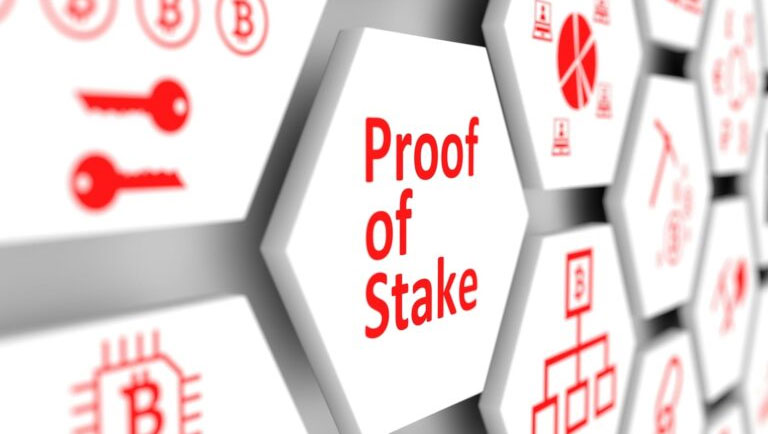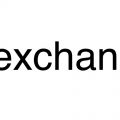
In this article, we will consider the prospects of cryptocurrency staking as a new method of passiveearnings, about the differences between staking and cryptocrediting, as well as about the main platforms designed for this.
If you haven't been interested in staking before, thenThe variety of coins and platforms that support this type of passive income can make your head spin. And with the advent of stablecoin staking, the choice has become even wider. Which type of coin is better in terms of profit and risks?
Cryptocurrency Staking in 2020
A year ago, cryptocurrency staking was a matter wheresimpler than it is now. The cryptocurrency market was attended by only a few specialized platforms, a pair of popular cryptocurrencies and approximately the same rate of return.
But these times have passed: in 2020, staking has grown into a serious segment of the crypto industry for several reasons.
- Firstly, the market now has more than 30 PoS coins that support the possibility of staking.
- Secondly, many crypto exchanges now have their own PoS nodes - an interesting alternative to special staking platforms.
Moreover, now investors are provided with staking and deposit accounts in stablecoins, which allow minimizing risk and getting profitability at the level of PoS-coins or even higher. What to choose?
To find out, you need to compare twothe main options on the market (PoS coins and stablecoins), according to a number of clear criteria. However, an important reservation must first be made about the nature of staking.
Staking and cryptocrediting are not the same thing
Coins that use the algorithmProof-of-Stake (PoS) consensus - Tezos, Cosmos, BIP, and LOOM - initially support staking. While the value of stablecoins is tied to a specific asset - for example, to the US dollar.
For stablecoins, not staking is available, but loans -coins are issued as a loan to another user who pays a deposit in response. However, for investors there is no particular practical difference between staking and lending. That is why one can hear on the cryptocurrency market, for example, about the “USDC staking”.
Real ROI and Volatility
Let us compare the return on investment in PoS coins and stablecoins and how this indicator is affected by the volatility inherent in the crypto market.
- PoS coins. Each coin has its own nominal rate of return built into the algorithm. For example, for Cosmos (ATOM) it is 8.35%. However, a really important value is the real profitability, which is calculated on the basis of price changes for any period. For example, if you invested $ 10,000 in stake in ATOM coins on January 1 of this year, then by June 1 you would have received a nominal income of about 3.5%. Instead of 2309 coins, you would have 2390. However, over the same period of five months, the price of a coin fell by more than 30%: from $ 4.33 to $ 2.96. The cost of the steak, along with interest, would be only $ 7075, and the real ROI would drop to -30%.
- Stablecoins. With them, everything is simple: what rate is declared, the investor receives such ROI, minus the platform commissions. On cryptocredit platforms, the rates are quite stable and allow you to predict income: for example, if you pay 1.94% per annum for USDC deposits on Fulcrum platform, then your profit in dollar terms will also be 1.94%, unless something out of the ordinary happens the USDC coin will not lose its peg to the US dollar.
Verdict:on average, the real ROI of stablecoins is higher or morepredictable as there is almost no volatility. A PoS coin can suddenly increase in value and generate returns of 20% or more, but it can also lose half of its value.
Number of platforms available and conditions
Next, we compare the number of available platforms for staking PoS coins and stablecoins and the conditions that they offer to holders.
PoS Coins
Dozens of platforms offer staking popular coins like Tezos and Cosmos. These sites can be divided into two categories:
- Specialized sites are Staked, Staking Lab and Dokia Capital, among others.
- Crypto exchanges - Bitfinex, Kraken, and KuCoin are among the smaller platforms.
Of course, platform competition is good for investors, but such a wide choice also means that you have to spend more time searching for information.
Choosing a coin, you will need to study the ratesprofitability taking into account the commission at different sites, as well as assess the risks of each of them. Moreover, commission rates on different platforms can vary greatly, which affects the investor’s income. For example, for the ATOM coin, the Binance exchange promises a yield of 6–9% per annum, while on Stakin this figure will be 9.1%, and on Gate.io - only 6.1%.
Stablecoins
This type of digital asset can be deposited on various lending platforms:
- Centralized - BlockFi, CoinLoan, Nexo, as well as a number of exchanges - Binance, Bitfinex, Poloniex.
- Decentralized - Compound, Nuo, dYdX, Aave and others.
It is worth considering that different lending platforms may offer completely different rates for the same coin. For example, the yield on deposits in USDC varies from 1.25% to 8.6%.
Verdict:In terms of the number of platforms, regular staking coins win. However, in the case of staking or lending in stablecoins, choosing a platform is easier: you don’t have to compare as many options.
Risks: interest in the project
We already mentioned volatility as keyrisk factor. When staking stablecoins, the investor receives a reward in cryptocurrency, which can often be exchanged for fiat. But staking PoS-coins can lead to losses due to volatility. Another factor by which it is worth evaluating the profitability of investing in a PoS coin is the level of interest in a particular coin.
Stablecoins have a significant advantage: they were originally created as a reliable way to store and transfer funds between participants in a transaction. In the current crisis, investor interest in stablecoins can only grow. On the other hand, each PoS coin is a cryptocurrency of some kind of blockchain project, which can both succeed and fail. If the founders do not launch the product, then the price of the token may fall.
Another risk factor is the platform itself, onwhich is staking. For both stablecoins and PoS coins, both centralized (custodial) and decentralized (non-custodian) platforms are available. A cryptocurrency exchange like Binance is a classic example of a custodial solution: you transfer coins to the exchange for storage. If she is attacked by hackers, your steak may disappear.
In the case of non-custodian platforms, the risk of theft orfraud is quite low. It doesn’t matter which asset to use when staking or depositing and where: USDC - on Compound, USDN - on WaveschangeExchange, XTZ - on P2PValidator.
And vice versa: on custodian platforms, the risks are higher, both in the case of providing stablecoins on credit, and in the case of staking PoS-coins. And since the bulk of PoS staking passes through exchanges such as Bitfinex and Binance, we can conclude that, on average, the risks of owners of PoS assets are more serious.
Verdict:PoS coins are riskier because of their pricestrongly depends on both interest in the blockchain project itself and market sentiment. For both types of coins, it is safer to choose non-custodial platforms.
Output
Nominal rates of return for PoS coins are oftenvery attractive, but price fluctuations can lead to negative profitability. In the case of stablecoins, a positive result is almost guaranteed. At the same time, you should not expect earnings on stablecoin more than 15-17%, although it is possible with a PoS asset.
Ultimately, the choice should depend on yourpersonal attitude to risk. Investors who are willing to take risks in the hope of earning super-high returns should invest in a classic PoS coin - for example, Tezos.
If it is important for you to keep the investment (especially in the case of large amounts), then stablecoins are definitely preferable due to the better risk-to-ROI ratio.
As the global economy deepensIn the crisis, more and more investors will acquire crypto assets. This will undoubtedly change the market balance in the segments of staking and cryptocredit. How exactly? We will find out soon.
</p> 5
/
5
(
1
voice
)





